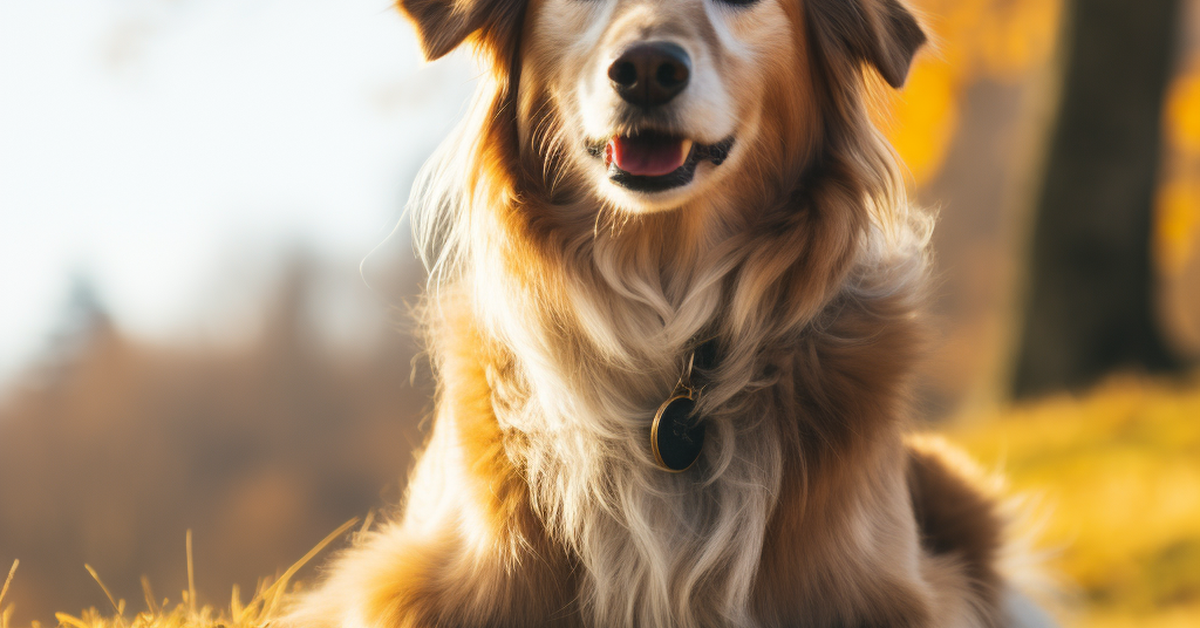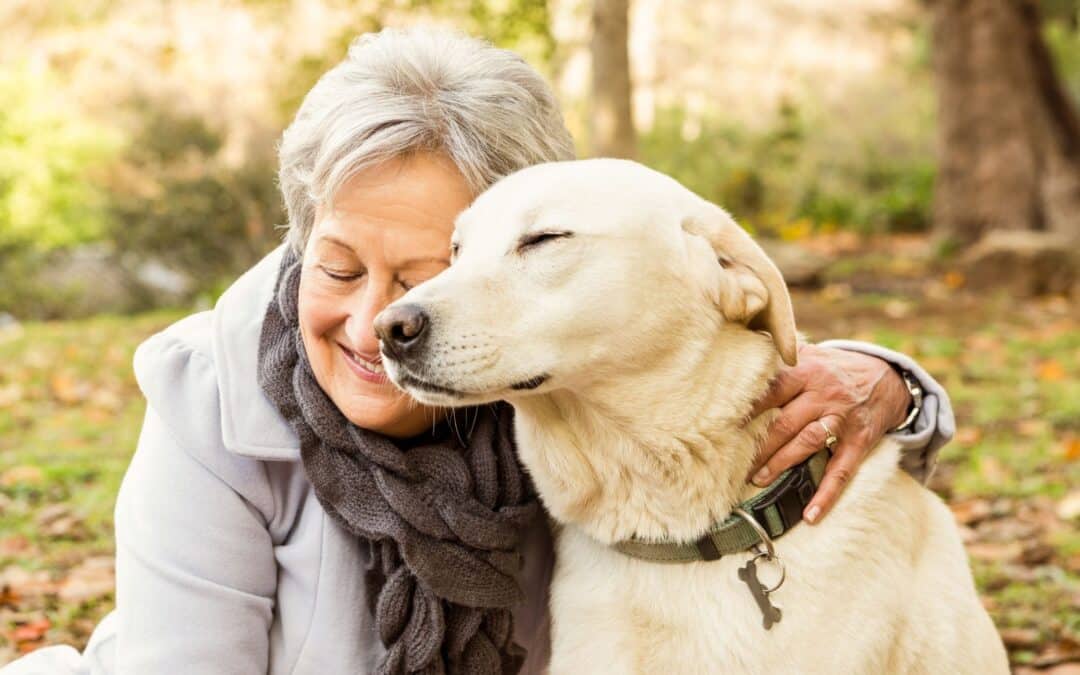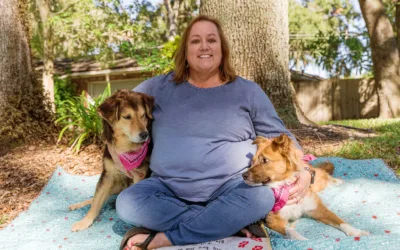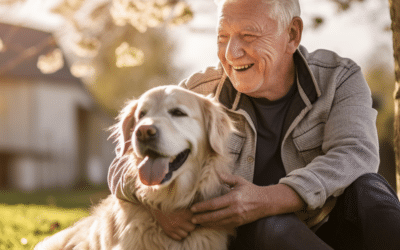Understanding the Basics of Senior Dog Health: Care Tips For Your Pet
As our furry companions age, they trot into their golden years with grace and a wagging tail. Yet, as they hit the senior mark, their needs shift, much like the changing seasons. Pet parents need to understand that this phase of life brings a change in pace and health needs. Recognizing the shift to senior status in dogs isn’t just about more naps in the sun; it’s about adjusting care to maintain their zest for life. Fido’s playful spirit might remain puppy-like, but their body may need extra support.
Like a trusty old tree showing signs of wear yet standing strong, our canine pals often display subtle signs indicating a change in their health landscape. They might not fetch as fast with age, or their bark may carry a different tune. These changes can be nuanced, yet they’re significant markers of a dog’s journey through life. Typical changes in health and behavior in senior dogs can include a slower gait, less enthusiasm for long walks, or even a cloudy gaze as their vision fades. These are natural progressions, and with a proactive approach to caring for a senior dog, we can ensure they enjoy their later years with comfort and happiness.
As we turn the page and ease into the next chapter, “Recognizing the Signs of Aging in Dogs,” we’ll look keenly for those telltale signs of aging. Just as a seasoned gardener knows the signs of a plant needing extra care, we, as devoted pet parents, can learn to spot the nuances that whisper of our dog’s advancing age. Care tips for your senior pet are not just guidelines; they are a map to guide us through this beautiful, albeit bittersweet, phase of companionship. Let’s journey together, understanding the basics of senior dog health, and keep our beloved companions thriving in their silver-whiskered years.
Recognizing the Signs of Aging in Dogs

As our beloved pups enter their senior years, physical appearance and behavior changes become more evident. It’s crucial to watch for these transformations, as they can clue us in on how to adapt their care to maintain their quality of life.
Physical Signs of Aging
- Graying fur around the muzzle
- Less pep in their step, hinting at joint discomfort or arthritis
- A noticeable shift in weight, whether it’s loss or gain, can be telling
- Bumps appearing on the skin, which a vet should check
Behavioral Changes in Senior Dogs
* Their snooze routine might be off-kilter, with more daytime naps or restlessness at night
* Signs of anxiety or disorientation could crop up
* They might seek more solitude or, conversely, need more reassurance from their human companions
These shifts in our aging dogs aren’t just quirks; they’re signposts for us to adjust their care, ensuring their twilight years are comfortable.
Now, let’s look at some specifics.
| Graying Fur | Mobility Changes | Weight Changes | Lumps and Bumps |
|---|---|---|---|
| A natural part of aging | Could indicate joint issues | Important to monitor | Should be checked by a vet |
Tips to Support an Aging Dog
- Adjust their diet to suit their age and health needs
- Maintain a gentle exercise routine to keep them mobile
- Regular vet check-ups are key to monitoring their health
- Make home adjustments, like ramps or soft bedding, for comfort
One of my dogs started having trouble getting up the stairs. So, we built a ramp to help her move around the house easier. A small change made such a big difference in her confidence and mobility.
Regarding mobility, it’s also important not to overlook the significance of mental health. Senior dogs may need extra love and patience as they cope with changes in their cognitive functions.
As we prepare to delve deeper into caring for our aging companions, it’s essential to remember that their needs evolve with time. Our role is to adapt alongside them, offering the support and love they’ve always given us. This means ensuring they have regular health assessments, tailored nutrition, and the right environment to thrive as they grow older. Like us, each day can be a golden opportunity for new memories and continued companionship with our furry friends.
Essential Health Assessments for Aging Dogs
As your furry friend enters their senior years, keeping a close watch on their health is vital. Just like people, dogs can face many health issues as they age. Regular check-ups and proper care can ensure your senior dog stays active and happy. Let’s walk through some key health assessments you should keep in mind.
Regular Veterinary Check-Ups
Bi-annual vet visits are crucial. Your vet can conduct bloodwork and diagnostic screenings during these visits to catch budding health issues early. It’s also a chance to assess your dog’s dental health, which can impact their overall well-being.
- Blood tests to check for conditions like diabetes or kidney issues
- Urine tests to spot infections or other urinary tract problems
- Physical exams to evaluate heart health and joint mobility
Monitoring Diet and Nutrition
As dogs age, their metabolism slows down. It’s important to adjust their caloric intake accordingly. A balanced diet packed with essential nutrients is key. Here are a few pointers:
- Lower calorie intake to prevent weight gain
- Maintain a diet rich in fiber for digestive health
- Consider supplements for joint support, cognitive function, and organ health
Adjusting Caloric Intake for Senior Metabolism
Senior dogs don’t burn calories as quickly. Hence, they need fewer calories. Still, their diet must be rich in high-quality proteins and nutrients to support aging bodies.
| Supplements and Vitamins | Benefits |
|---|---|
| Glucosamine and Chondroitin | Joint health and mobility |
| Omega-3 Fatty Acids | Cognitive function and skin health |
| Antioxidants | Support immune function and combat aging |
Supplements and Vitamins for Joint, Cognitive, and Organ Support
Supplements can be a game changer for senior dogs. Glucosamine and chondroitin can support joint health, while omega-3 fatty acids might boost cognitive function. Antioxidants can help their immune system and fight the effects of aging.
Remember, each dog is unique. Always talk to your vet before changing your dog’s diet or adding supplements.
Tips for Your Senior Dog’s Diet
- Keep treats to a minimum to avoid unnecessary weight gain
- Ensure fresh water is always available
- Monitor your dog’s weight and adjust their diet as needed
With these assessments and care strategies, your senior dog can enjoy their golden years. Now, imagine your pet’s tail wagging as they trot along, healthier and more vibrant than ever. It’s the kind of joy that makes every effort worth it. Soon, we’ll also touch on how to tackle those common ailments that may come with age, ensuring your canine companion gets the love and attention they deserve through every stage of their life.
Common Health Issues in Senior Dogs
Owning a senior dog brings joy and a unique set of responsibilities. As dogs age, they often face health challenges like humans. Let’s jump into the common issues they may encounter and how you can help your furry friend stay comfy in their golden years.
Degenerative Diseases
Arthritis and joint pain management
Arthritis strikes many older dogs, causing discomfort and limiting mobility. But you can ease their pain with medications, supplements, and comfy beds that cushion their joints. Regular but gentle exercise keeps them limber. My own dog has arthritis in her back so we have had to adjust our routine a bit.
Cognitive Dysfunction Syndrome (CDS) symptoms and care
CDS can cause confusion in senior dogs. They might forget routines or seem distant. Special diets and mental stimulation help, so play brain games with your pup or teach them new, simple tricks to keep their mind sharp.
Heart disease and its impact on lifespan
Heart issues can shorten a dog’s life, but early detection and treatment can make a difference. Look for coughing or fatigue and consult your vet if you spot these signs. Regular check-ups are key to catching heart disease early.
Chronic Conditions and Management
Kidney and liver function maintenance
Kidneys and liver may not work as well in older dogs. Regular blood tests can catch problems early. Keeping your dog hydrated and on a proper diet supports these vital organs.
Diabetes monitoring and insulin management
Diabetes isn’t a death sentence. With insulin and diet changes, diabetic dogs can lead happy lives. Monitor their blood sugar and watch for symptoms like excessive thirst or urination.
Cancer detection and treatment options
Cancer is a scary word, but treatment options are available. Surgery, chemotherapy, or radiation could extend your dog’s life. Keep an eye out for unusual lumps or changes in behavior and visit the vet if you’re concerned.
Here’s a snapshot of what you might expect with a senior dog’s health:
| Condition | Symptoms | Management |
|---|---|---|
| Arthritis | Limping, difficulty moving | Pain meds, comfy beds |
| CDS | Confusion, altered sleep patterns | Mental exercises, diet |
| Heart disease | Coughing, fatigue | Regular vet visits, meds |
| Kidney/Liver issues | Increased drinking/urination | Diet, hydration |
| Diabetes | Excessive thirst, weight loss | Insulin, blood sugar monitoring |
| Cancer | Lumps, lethargy | Surgery, chemo, radiation |
Remember, these conditions don’t spell the end of happy days for your dog. Your senior buddy can still enjoy a quality life with love and proper care.
As we wrap up, consider how you might rearrange your living space to cater to an aging pet. Think soft beds and easy access to food and water. And maybe it’s time for a special ramp to help them onto the couch or your bed, so they can continue to be a central part of your everyday life.
Adapting Your Home for an Aging Dog
As our furry friends age, their needs change, and so should our homes to accommodate them. Elder pooches may not zip around like they once did, but that doesn’t mean they can’t have a comfortable and accessible living space. With a few adjustments, your home can become a senior dog-friendly haven.
Creating a Senior-Friendly Living Space
- Accessibility improvements, like ramps and stairs, help older dogs move around without strain.
- A cozy bed with extra padding can soothe those achy joints.
- Keep the place warm or cool—senior dogs can be sensitive to extreme temperatures.
Ramps and Stairs:
Older dogs often find jumping up or down a chore, and it can be painful if they suffer from arthritis. Ramps or small steps can make their life much easier, allowing them to reach their favorite couch or bed without discomfort.
Comfortable Bedding:
An orthopedic dog bed is not just a luxury; it’s essential for an aging dog. These beds are designed to provide support and ease the pain that comes with age.
Temperature Control:
Senior dogs may struggle to regulate their body temperature. Keep your home’s temperature consistent, and consider a heated bed for those chilly nights.
Mental Stimulation and Physical Exercise
- Slow down the exercise but keep it regular.
- Puzzle toys can challenge their mind and keep them sharp.
- Understand when it’s time to rest and when to encourage a little activity.
Senior dogs may not have the same stamina they used to, but they still need to stay active to maintain their health. Modify their exercise routine to match their current energy levels and consider gentle activities like leisurely walks or short games of fetch.
Interactive toys and games are fantastic for keeping your dog’s mind engaged. They can prevent boredom and help maintain cognitive function. Remember, a stimulated mind leads to a happy dog!
It’s also crucial to strike the right balance between rest and activity. Too much rest can lead to muscle atrophy, while too much activity can be hard on their aging bodies.
Here’s a quick list of activities to consider for your senior dog:
- Shorter, more frequent walks
- Gentle tug-of-war
- Food puzzles and treat-dispensing toys
- Hide and seek with treats
Table: Adjusting Activities for Senior Dogs
| Activity Type | Benefit | Tips |
|---|---|---|
| Short Walks | Maintains muscle tone | Keep pace slow |
| Puzzle Toys | Stimulates the mind | Choose age-appropriate puzzles |
| Gentle Play | Encourages movement | Avoid rough play |
| Regular Rest | Ensures recovery | Provide a comfy resting spot |
Remember, each dog is unique, so monitor your pet and adjust these activities to suit their individual needs.
As we draw this section close, consider the gentle transitions our beloved companions go through as they enter their golden years. Much like the changing of seasons, their care will need to evolve. We’ll explore how to ensure their twilight years are filled with contentment and care, just as they’ve filled our lives with joy.
To learn more about adapting your living space and activities for your senior dog, you might find these resources helpful. And if you’ve found joy in this journey of caring for your aging companion, you might also appreciate our article on how to safely store hazardous items away from pets, featuring tips to keep your home safe for dogs of all ages.
Planning for Advanced Senior Care
When our furry companions enter their golden years, we, as pet parents, must adapt to their changing needs. Senior dogs often require more attention, modified diets, and specialized veterinary care. Planning for their advanced care is essential to ensure our dogs remain comfortable and content as they age.
End-of-Life Considerations
As tough as it is to ponder, end-of-life care is a pivotal part of owning a senior dog. It’s about making their final days as peaceful as possible.
- Understanding hospice care for dogs: This is a compassionate choice, focusing on the quality of life for terminally ill pets. It helps manage pain and ensure your dog’s comfort during their last phase of life.
- The role of palliative care in comfort management: Palliative care relieves the symptoms and stress of a serious illness. The goal is to improve life quality for both the dog and the family.
- Preparing for the decision of euthanasia: A heart-wrenching choice, yet sometimes the kindest. Please work with your vet to understand when it might be time to ensure your beloved pet’s dignity and alleviate suffering.
Financial Planning for Senior Dog Health
Costs can climb as dogs age. Prepare financially to avoid tough decisions later.
- Pet insurance and its benefits for senior care: It can offset some medical expenses, but be aware of the policy details regarding age and pre-existing conditions.
- Budgeting for increased medical costs: Set aside a fund or look into pet savings accounts specifically for your dog’s senior years.
- Options for care funding and savings: Besides savings, explore community resources or charities that assist with veterinary bills.
By integrating these steps into our routine, we honor our senior dogs’ loyalty and enrich the time they have left. As we approach the horizon of our journey together, each moment becomes a treasure to cherish, a reminder to savor the simple joys of companionship.
Conclusion: Embracing the Golden Years
Our journey through understanding the basics of senior dog health brings us here, to a point where we wrap our thoughts like a cozy blanket around our aging furry friends. Taking care of an older dog isn’t just a responsibility; it’s a chance to give back some of the unconditional love they’ve showered on us over the years. Regular check-ups are a cornerstone for maintaining their well-being, as proactive management can ward off potential health issues or catch them in the pup stages.
We at Yappy Life know the bond between you and your dog grows stronger as the years pass. That’s why we urge you to cherish every wag, every nuzzle, every slow-paced walk. Let’s make the most of our time with our senior canines by ensuring their golden years are as comfortable and joyous as possible. After all, isn’t that what the Yappy Life is about? Loving and putting our dog’s needs at the heart of our actions.
Key Takeaway
The key to a fulfilling life for our senior dogs lies in understanding and catering to their changing health needs. By staying informed and vigilant, we can ensure that our loyal companions enjoy their twilight years to the fullest. Now is the moment to act, to show them our gratitude with extra cuddles and care. So, won’t you join us in living the Yappy Life? Subscribe to our newsletter for more dog-related news, tips, and hearty stories. Together, let’s honor our aging dogs, making every day count.
Remember, at Yappy Life, we’re not just about outfitting you and your pup with the latest apparel; we’re about creating a community that thrives on love for dogs. Every article, every tip, every product we recommend is chosen to enhance your life with your pet. So, if you’re looking to give your senior dog the best in comfort and care, check out our recommended products. Each purchase supports our mission, allowing us to share more heartfelt advice and stories with you. Give us a call or drop us an email; we’re always here to help you navigate the path of senior dog care.
Frequently Asked Questions about Understanding the Basics of Senior Dog Health
What age does a dog become a senior?
The age at which a dog becomes a senior can vary significantly depending on the breed and size of the dog. Small breeds often live longer and may not be considered senior until they are around 10-12 years old. Medium-sized breeds are generally considered senior around 8-10 years, while large and giant breeds may reach senior status at 6-8 years old.
What are common health problems in senior dogs?
Common health problems in senior dogs include arthritis, dental disease, obesity, kidney disease, heart disease, liver disease, diabetes, vision and hearing loss, cognitive dysfunction, and cancer. These conditions can affect a senior dog’s quality of life and may require changes in care and treatment.
How can I tell if my senior dog is in pain?
Signs your senior dog might be in pain include decreased activity, reluctance to climb stairs or jump, limping, difficulty standing up or lying down, loss of appetite, changes in behavior such as aggression or withdrawal, and excessive licking of a particular area. If you suspect your dog is in pain, consult your veterinarian.
Are there special dietary needs for senior dogs?
Senior dogs may have different dietary needs due to changes in metabolism and activity levels, as well as the potential presence of chronic health issues. They may require diets with lower calories to prevent obesity, increased fiber for gastrointestinal health, and adaptations in protein and fat content. Some senior dogs may benefit from supplements like glucosamine and chondroitin for joint health. Always consult with your veterinarian for a diet tailored to your dog’s specific needs.
How often should a senior dog visit the vet?
Senior dogs should have veterinary checkups at least once a year, though twice a year is often recommended due to their increased risk of health problems. These visits can help in early detection and management of age-related issues.
Can senior dogs still exercise?
Yes, senior dogs still need exercise to maintain a healthy weight, muscle tone, and mental health. However, the intensity and duration of exercise should be adjusted to suit their aging bodies. Low-impact activities like walking or swimming can be beneficial for seniors.
What can I do to make my home more comfortable for a senior dog?
To make your home more comfortable for a senior dog, consider providing orthopedic dog beds to support arthritic joints, ramps to access higher areas to avoid stairs, non-slip mats to prevent falls, and more frequent potty breaks. Keep their living area warm and free from drafts, and ensure that food and water are easily accessible.
How do I manage my senior dog’s cognitive dysfunction?
Cognitive dysfunction, similar to dementia in humans, is a common condition in aging dogs. Management may include environmental enrichment with toys and puzzles, regular exercise, a diet rich in antioxidants, and potentially medication prescribed by your vet. Consistency in routine and patience are also key in managing this condition.
What should I do if my senior dog refuses to eat?
If a senior dog is refusing to eat, it’s important to consult a veterinarian as it could be a sign of an underlying health issue. Meanwhile, try offering a variety of foods, warming the food to enhance aroma, and making sure that the food is easily chewable if dental issues are present.
How can I prepare for end-of-life care for my senior dog?
Preparing for end-of-life care involves discussing with your vet about the prognosis and options for your dog’s condition, understanding the signs of declining quality of life, and deciding on palliative care or humane euthanasia when necessary. Consider your dog’s comfort, pain levels, and ability to enjoy life in making these decisions. It’s also important to take care of your emotional needs during this time by seeking support from friends, family, or pet loss support groups.





Recent Comments